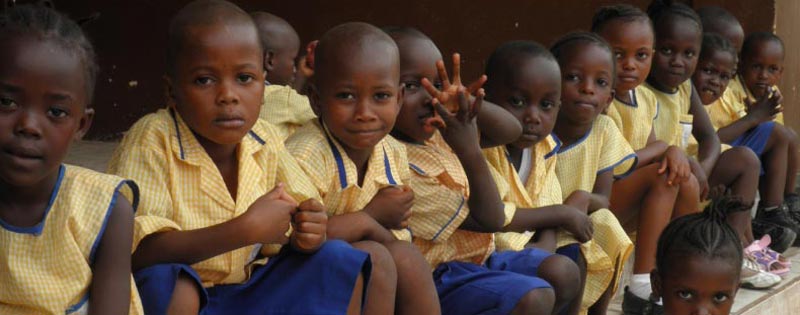SIERRA LEONE AT A GLANCE
The West African nation of Sierra Leone has a population of approximately 5.2 million people and is bordered by the North Atlantic Ocean, Guinea and Liberia. In area, it is slightly smaller than South Carolina. There are two seasons - wet and dry - from May to December and December to April, respectively. The country is rich in natural resources and depends on agriculture as a major industry. English is the official language, but there are many dialects of which Krio, Mende and Temne which are widespread.
Within Sierra Leone, democracy is being rebuilt after a civil war which lasted from 1991 to 2002, resulting in thousands of deaths and the displacement of about 2 millions people. The nation of Sierra Leone continues to struggle with infrastructure-building, economic development, the provision of social services such as health and welfare, and more. The new government’s priorities include furthering development, job creation, erasing corruption and providing social support systems through education, health and other welfare programs.
Maternal Health
Notably, in 2010, Sierra Leone legally guaranteed free healthcare to women and children nationwide in an effort to bolster maternal-child health. However, many barriers still remain in providing health care and allowing for geographic, economic and sociocultural access to these services. Sierra Leone has one of the highest maternal mortality rates in the world, compounded by rampant infectious diseases such as malaria and yellow fever, and other health ills such as malnutrition.
Sierra Leone has signed on to the United Nation’s Millennium Development Goal #5 to improve maternal health by the year 2015. Health facilities in Sierra Leone are comprised of a blend of private clinics, government hospitals and NGO-run facilities such as Medicines San Frontiers hospitals.
- Only 43% of women have a skilled attendant at childbirth (UNICEF).
- Lifetime risk of maternal death is 1 in 8. (UNICEF).
- Infant mortality rate is 80 deaths in 1,000 live births (World Factbook).
Education
Primary education in Sierra Leone is compulsory, however many educational facilities were destroyed throughout the civil war. Since 2002, successful efforts to rebuild the national school system have been undertaken, however, more work remains to be done.
Sierra Leone has a very low level of literacy among adults, and school attendance remains an issue. The school life expectancy for primary to tertiary education is an average of 7 years, with males completing on average 9 years of school and females completing only 6; gender inequality within education is clearly an issue (World Factbook).
- 35.1% of the population aged 15 and older are literate (49.9% of this total are males; 24.4% are females) (World Factbook).
- 3.8% of GDP is spent on education (World Factbook).
Economic Sustainability
Sierra Leone is a nation struggling with poverty, and facing huge inequality in income distribution. Despite a wealth of natural resources and reliance on agriculture, the nation’s economy and infrastructure is still recovering from the civil war. In addition, subsistence farming, deforestation and slash-and-burn agriculture contribute to poor food production and limited economic benefits. Diamond mining, for which Sierra Leone is known, remains the nation’s major export; however smuggling and corruption continue to prove problematic. In addition, opportunities for employment or to start small businesses are limited as economic infrastructure is fragile. In Sierra Leone, social issues continue to impede economic development.
- 70.2% of population below the poverty line (World Factbook).
- GDP per capita is US$900, 2010 estimation (World Factbook).
|
